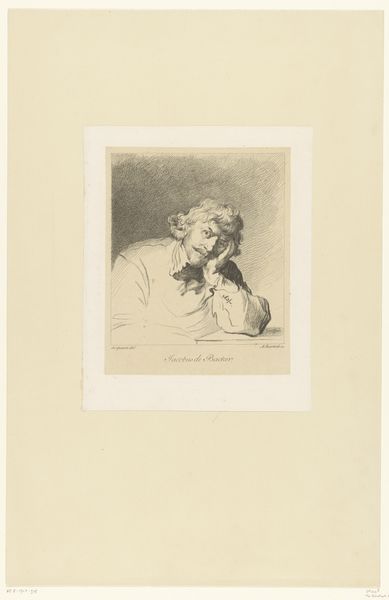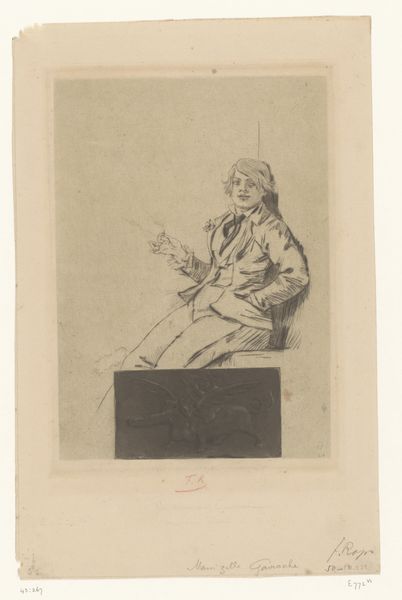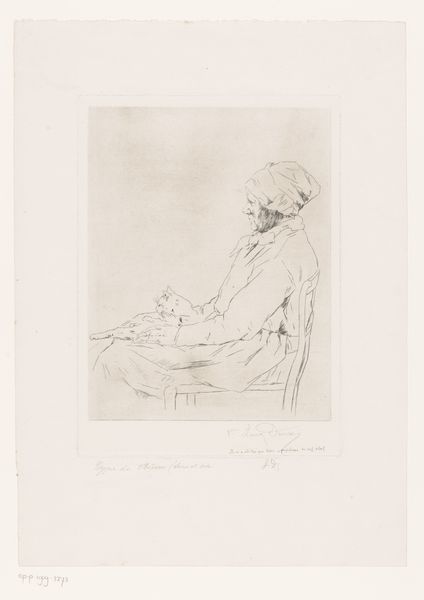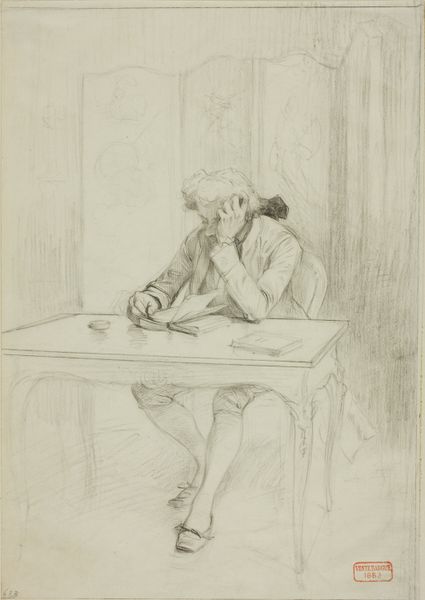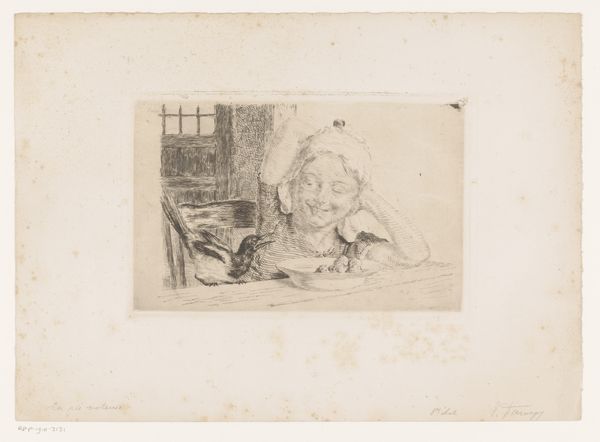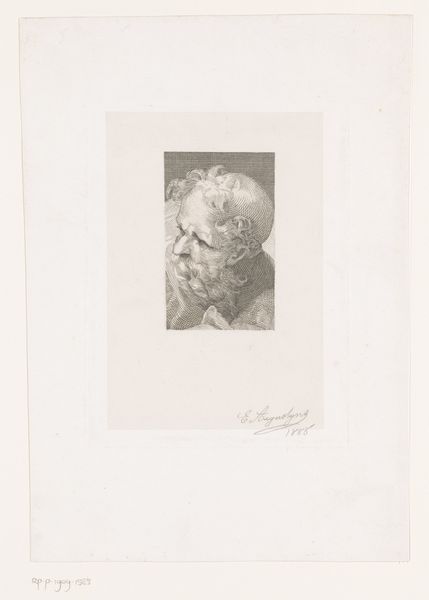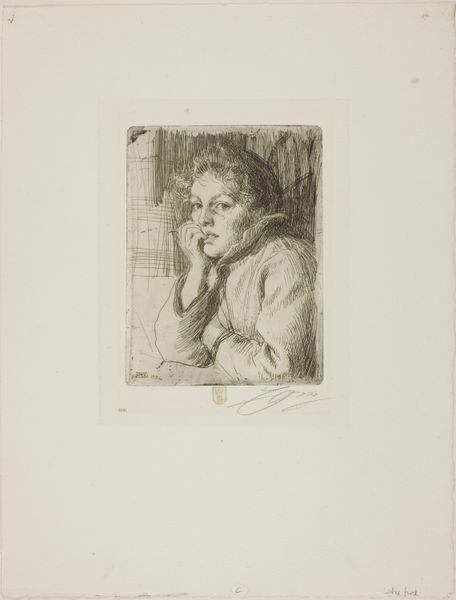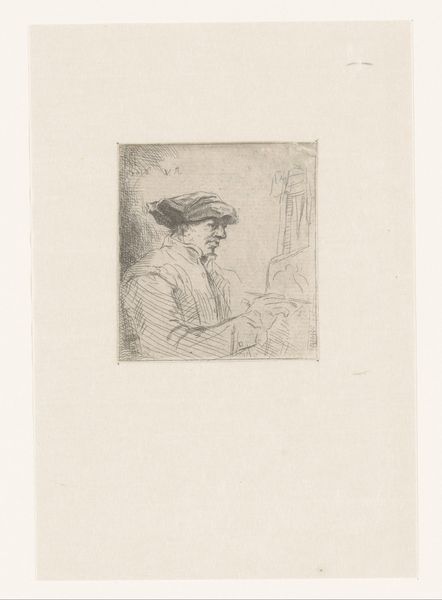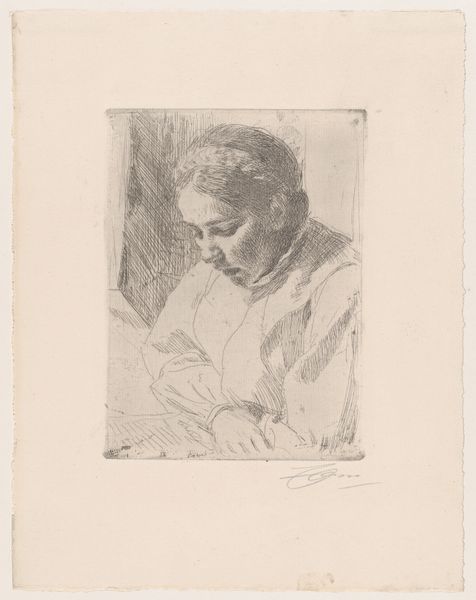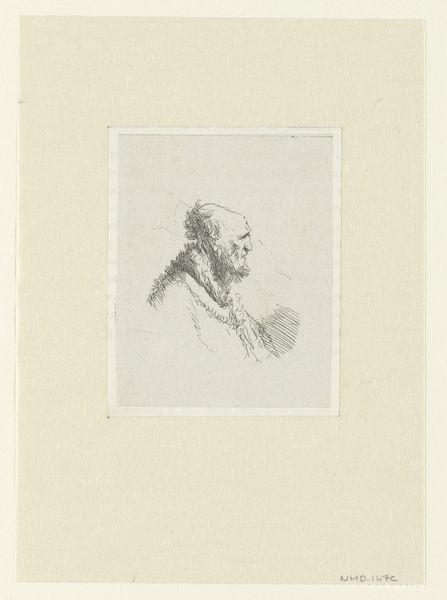
drawing, print, ink, graphite, engraving
#
portrait
#
drawing
# print
#
figuration
#
ink
#
line
#
graphite
#
engraving
Dimensions: height 196 mm, width 158 mm
Copyright: Rijks Museum: Open Domain
Editor: This is a drawing titled "Portret van Jacob Adriaensz. Backer" from around 1803 by Adam von Bartsch. It seems to be made with graphite and ink. It strikes me as quite intimate, a moment of contemplation captured. What do you see in this piece? Curator: It's fascinating how Bartsch uses the language of portraiture here, but through the lens of printmaking. This piece raises interesting questions about accessibility and the democratization of images. Before photography, prints like these were a primary means for distributing portraits beyond the elite. How do you think this impacts our understanding of Backer's legacy? Was this print intended for public consumption, or for a more limited, perhaps scholarly audience? Editor: That's a good question! The fact that it's a print suggests a wider audience than, say, a unique painted portrait. Do you think the artist intended to solidify Backer's position within the art historical canon? Curator: Absolutely. Prints like this were often commissioned to commemorate or disseminate the likeness of important figures. Bartsch was not just an artist but also a scholar and collector of prints. Considering this, the act of creating this print itself speaks to Bartsch’s own role in shaping the narrative around Dutch Golden Age painting and his power in the construction of an artistic legacy for Backer. To make a drawing after a painting and then translate it into an engraving is to take the cultural role of portraiture and use it as an analytical, interpretive tool. Editor: So, it's not just a likeness; it's also a commentary on Backer's place in art history. It makes you wonder how many people saw this print compared to Backer’s original paintings, and how that affected their perception of him. Curator: Precisely. It really underlines the role of institutions and dissemination in creating artistic fame. These kind of printed portraits ensured certain people's prominence and visibility and it shows how power operates around artistic memory. Editor: This has totally changed how I view the work. Thank you for shedding light on its wider historical context!
Comments
No comments
Be the first to comment and join the conversation on the ultimate creative platform.
